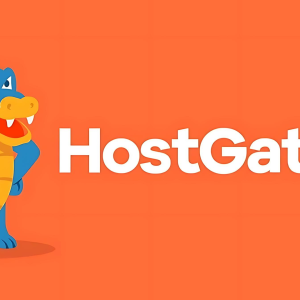
When looking for a cheap website hosting with subdomains, it can be challenging to find a reliable provider that offers both affordability and quality service. In this guide, we’ll explore the best options for hosting your website without breaking the bank while also providing subdomains for your growing business needs.
What is Website Hosting with Subdomains?
Website hosting is the service that allows your website to be accessible on the internet. When you use a hosting provider that offers subdomains, you get the ability to create multiple websites or sections of your website under the same domain. For example, if your main website is www.yourbusiness.com, you can create a subdomain like blog.yourbusiness.com or shop.yourbusiness.com.
Why Choose Cheap Website Hosting with Subdomains?
Opting for a hosting provider that offers cheap plans with subdomains is a smart way to manage your website and its different components. It allows you to organize content into distinct sections without having to purchase multiple hosting plans. This is especially beneficial for small businesses or personal projects where budget constraints are a concern.
Best Cheap Website Hosting Providers with Subdomains
Several web hosting providers offer affordable hosting plans with subdomains. Let’s take a look at some of the top options:
- Hostinger: Hostinger is one of the best affordable hosting providers that offer subdomains in their plans. Prices start as low as $1.99 per month, making it ideal for individuals or small businesses. Hostinger also offers a user-friendly interface, which makes managing subdomains a breeze.
- Affordable Plans: Starting at just $2.99/month.
- Fast Performance: Average response time of 143 ms.
- Comprehensive Support: 24/7 live chat assistance.
- Advanced Security: Unlimited free SSL certificates and DDoS protection.
- Versatile Hosting Options: Shared, cloud, VPS, and Minecraft server hosting.
- User-Friendly Website Builder: Drag-and-drop functionality with eCommerce features.
- Global Reach: Over 29 million users in 178 countries.
- 30-Day Money-Back Guarantee: Risk-free trial to experience Hostinger’s services.
- Bluehost: Bluehost is another top choice for cheap website hosting. Their plans start from $2.95 per month, and they allow you to create unlimited subdomains. This is perfect for people looking for an inexpensive way to manage various sections of their website.
- Leading web hosting provider since 2003
- 99.99% uptime guarantee and high performance
- Easy-to-use dashboard and one-click WordPress installation
- 24/7 customer support via phone, chat, and email
- Free SSL certificates and advanced security features
- Affordable plans for every budget
- Trusted by over 2 million websites worldwide
- Real customer testimonials praising reliability and support
- HostGator: HostGator’s plans start at $2.75 per month and include unlimited subdomains. Their easy-to-use control panel makes it simple to manage subdomains, whether you’re creating a blog, online store, or support page.
- Leading web hosting provider since 2002
- 99.9% uptime guarantee for reliability
- Competitive pricing and 45-day money-back guarantee
- 24/7/365 customer support
- User-friendly cPanel for easy management
- Scalable plans for all business needs
- Real customer testimonials
- Hosting plans: Shared, VPS, Dedicated, and WordPress
- Additional services: Website Builder, Domain Registration, SSL Certificates, Email Hosting
- A2 Hosting: A2 Hosting is a dependable and affordable hosting service, with plans starting as low as $2.99 per month. With A2 Hosting, you can easily create unlimited subdomains, giving you the flexibility to organize and expand your website’s structure without additional costs. This makes it a perfect option for businesses or individuals looking for cheap website hosting with room for growth.
- Lightning-Fast Speed: 20x faster Turbo Servers for optimal performance.
- Reliable Uptime: 99.9% uptime guarantee ensures your site is always online.
- 24/7/365 Support: Guru Crew support available anytime you need assistance.
- Eco-Friendly: Committed to green hosting with carbon offsets.
- Versatile Plans: Offers shared, VPS, and dedicated hosting plans.
- Secure Hosting: Free SSL certificates and robust security features.
- Developer-Friendly: Supports multiple programming languages and free site migrations.
How to Set Up Subdomains on Cheap Hosting Providers
Setting up a subdomain is typically a straightforward process. Here’s how you can do it with most hosting providers:
- Log into your hosting control panel (cPanel or similar).
- Look for the Subdomains section.
- Enter the name of the subdomain you want to create (e.g., blog, shop, etc.).
- Choose the root domain (your main website domain) to associate the subdomain with.
- Click on the Create button to set up the subdomain.
Pricing and Where to Buy
Here’s a breakdown of the pricing for cheap website hosting with subdomains from the providers mentioned above:
| Provider | Starting Price | Subdomains Included | |
|---|---|---|---|
| Hostinger | $1.99/month | Unlimited | LEARN MORE |
| Bluehost | $2.95/month | Unlimited | LEARN MORE |
| HostGator | $2.75/month | Unlimited | LEARN MORE |
| A2 Hosting | $2.99/month | Unlimited | LEARN MORE |
You can purchase these hosting plans directly from the respective provider’s website. Be sure to check for any available discounts or promotions, as many hosting services offer promotional pricing for new customers.
Final Thoughts
Choosing cheap website hosting with subdomains is an excellent option for managing multiple sections of your website or creating a network of websites under one domain. Providers like Hostinger, Bluehost, HostGator, and A2 Hosting offer affordable plans with unlimited subdomains, making them a great choice for those on a budget. Take the time to compare the features and pricing of each provider to find the one that best fits your needs and start building your online presence today.
With affordable hosting options at your fingertips, it’s easier than ever to get started with multiple websites or subdomains, all without straining your budget. So why wait? Choose your hosting provider today and take your website to the next level!
FAQs
- What is the main benefit of using subdomains for my website?
- Subdomains provide an effective way to organize your website into distinct sections. For example, you can create a subdomain for your blog (blog.yourbusiness.com), an online store (shop.yourbusiness.com), or even a customer support page (support.yourbusiness.com) under the same main domain. This helps in maintaining a clean and organized structure, making it easier for visitors to navigate through your site. Furthermore, subdomains allow businesses to separate different functionalities without needing additional hosting plans, offering flexibility at a lower cost.
- Are subdomains treated as separate websites for SEO purposes?
- Yes, subdomains are often treated as separate websites by search engines. This means that each subdomain can have its own SEO strategy, rankings, and content. However, this can be a double-edged sword—while it allows for targeted optimization of different sections, it may also require more effort to build domain authority for each subdomain. For example, your main website (www.yourbusiness.com) might rank well for your industry’s keywords, but your blog (blog.yourbusiness.com) might need separate SEO efforts to attract traffic.
- What kind of businesses or projects benefit the most from cheap hosting with subdomains?
- Small businesses, personal projects, and startups often benefit the most from cheap hosting with subdomains. These businesses usually want to maintain a professional online presence without breaking the bank. Subdomains allow you to create separate sections or services within the same website, offering you more flexibility and control without having to purchase multiple hosting plans. For instance, a small e-commerce business could use a subdomain for their store, while keeping other services like blogs or customer support in separate subdomains.
- Do I need advanced technical knowledge to manage subdomains?
- No, you don’t need advanced technical knowledge to manage subdomains, especially with hosting providers like Hostinger, Bluehost, HostGator, and A2 Hosting, which offer user-friendly control panels. Setting up a subdomain typically requires just a few clicks. You’ll usually need to log in to your hosting control panel (such as cPanel), find the subdomains section, and create a new subdomain by choosing its name and associating it with your primary domain. Most hosting providers also offer tutorials and support to guide you through the process.
- Can I create unlimited subdomains with all hosting providers?
- Yes, most affordable hosting providers like Hostinger, Bluehost, HostGator, and A2 Hosting offer unlimited subdomains with their plans. This is a significant advantage for businesses or individuals who want to expand their online presence without additional costs. Whether you need separate subdomains for a blog, e-commerce store, or a portfolio, these providers allow you to create as many as you need. However, always double-check the terms and conditions of your hosting provider to ensure they don’t impose any hidden limits on subdomains.
- What’s the difference between a subdomain and a subdirectory?
- A subdomain and a subdirectory serve different purposes in website structure. A subdomain (e.g., blog.yourbusiness.com) is a separate entity from the main domain, often treated as a standalone site by search engines. On the other hand, a subdirectory (e.g., yourbusiness.com/blog) is a folder within your main website, sharing the same domain and authority. While subdomains offer more flexibility and independence, subdirectories help maintain the link authority from the main domain. Both have their advantages, but the choice depends on your goals.
- Can I use subdomains to host different websites under one hosting plan?
- Yes, you can use subdomains to host different websites under one hosting plan. This is a key benefit of using subdomains in your hosting strategy. For example, if you are running a business with different product categories or services, you can create subdomains for each (e.g., store.yourbusiness.com, blog.yourbusiness.com). Each subdomain can have its own design, content, and functionality, but they all operate under the same hosting plan. This saves you money, as you don’t need to pay for separate hosting for each website.
- Are there any security concerns with using subdomains?
- While subdomains offer many benefits, they can also pose security risks if not managed properly. Since subdomains are often treated as separate entities by search engines and browsers, a vulnerability in one subdomain might affect the security of the others. For example, if your subdomain for the online store is hacked, it could potentially affect the reputation of your main domain. It’s important to implement security measures such as SSL certificates, regular backups, and strong passwords across all subdomains to protect your sites from attacks.
- How do I manage multiple subdomains on cheap hosting plans?
- Managing multiple subdomains on cheap hosting plans is easy with most hosting providers. You can use the hosting control panel (like cPanel) to create and manage subdomains. Here’s a basic outline of the steps:
- Log into your hosting account.Navigate to the Subdomains section.Create a new subdomain by entering the desired name (e.g., blog or store).Associate the subdomain with your main domain.Manage the files and configurations for each subdomain separately.
- Managing multiple subdomains on cheap hosting plans is easy with most hosting providers. You can use the hosting control panel (like cPanel) to create and manage subdomains. Here’s a basic outline of the steps:
- Is it better to use subdomains or separate domains for different projects?
- Whether to use subdomains or separate domains depends on your specific needs. If your projects are closely related (e.g., a blog and a product store for the same brand), using subdomains can be more cost-effective and efficient. However, if your projects are unrelated or target different audiences (e.g., a personal blog and a business site), it might make sense to use separate domains for each. Separate domains can provide more independence, brand recognition, and SEO benefits, but they often come with additional costs, such as domain registration and separate hosting plans.










